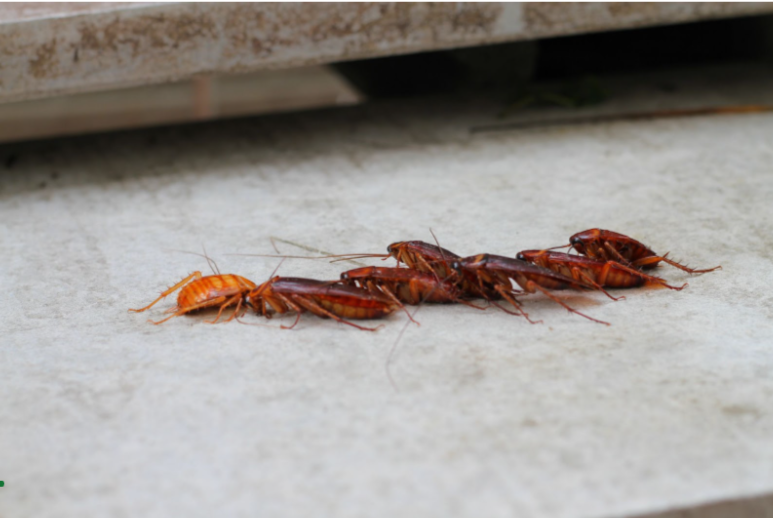How Heat Affects Cockroach Life Cycle and Reproduction
Cockroaches are one of the most resilient pest species known to mankind. Renowned for their ability to thrive in diverse environments, these creatures have intrigued entomologists and homeowners alike. Given their capacity to adapt and multiply quickly, it’s essential to understand their life cycle and reproductive habits to manage their populations effectively. One of the significant factors influencing cockroach populations is the environment, particularly temperature. By examining how heat affects cockroach life cycles, we gain insights into their development and breeding patterns, shedding light on their persistence and adaptability.
Understanding the Cockroach Life Cycle
The cockroach life cycle is an extraordinary journey comprising three main stages: egg, nymph, and adult. Each stage is pivotal for their survival and adaptation. Under typical conditions, a female cockroach carries her eggs in a case known as an ootheca, which can contain up to 50 eggs. During the first stage, the eggs remain in this case, until they hatch, typically taking about 24 to 36 days, depending on species and environmental conditions.
Once hatched, the cockroach enters the nymph stage, where it resembles a smaller version of the adult but without wings or fully developed reproductive organs. The nymph phase is characterised by several moults, as the young cockroach sheds its exoskeleton to grow. This phase can last from a few weeks to several months under normal conditions.
Finally, the adult stage is when cockroaches reach full size and begin their reproductive cycle. Adaptability is a hallmark of the cockroach, allowing these creatures to survive in various climates, but each phase of the life cycle plays a critical role in ensuring their survival and proliferation. Hatchlings must quickly mature to continue their species’ lineage, especially in unfavourable conditions, underscoring the biological importance of each stage.
The Role of Temperature in Cockroach Development
Temperature plays a vital role in the life cycle of cockroaches. Heat, in particular, can accelerate the transition between different stages. Higher temperatures generally speed up the cockroach’s development, reducing the duration of the egg incubation period significantly. By understanding how heat affects the cockroach life cycle, we can observe how warmer conditions lead to faster hatching, which shortens the waiting time for new generations of nymphs to appear.
As nymphs, cockroaches are highly dependent on the ambient temperature for growth. Increased heat leads to more frequent moulting, allowing nymphs to reach adulthood more swiftly. Some species have been observed to cut down their maturation time in half when the environmental temperature rises, showcasing a striking adaptability to heat.
Species-specific responses to temperature variations can also be observed in the wild. While some cockroaches thrive in tropical climates with consistently high temperatures, others have adapted to temperate regions, where they exhibit varying development times depending on the season. Understanding these responses is crucial for predicting population booms in different climates.
Heat and Cockroach Reproduction Rates
Temperature not only influences the growth stages of cockroaches but also affects their reproductive rates. Increased temperatures correlate with heightened reproductive frequency, leading to more frequent egg production and shorter intervals between egg-laying. The gestation period for cockroach eggs shortens as well, resulting in an accelerated cycle of new generations.
Heat’s impact on fertility rates and hatchling viability can be profound. While higher temperatures can boost egg production, they can also affect the viability of eggs and hatchlings. Optimal temperature ranges for breeding are crucial to ensure that offspring survive to reach maturity. Too much heat might result in desiccated eggs, while insufficient warmth could slow down development.
Identifying these optimal temperature ranges allows us to predict breeding peaks and plan pest control measures accordingly. The delicate balance between temperature, fertility, and hatchling success determines the sustainability of cockroach populations in varying environments.
Behavioural Changes in Cockroaches Due to Heat
Rising temperatures don’t just impact the physical aspects of cockroaches; they also lead to significant behavioural changes. Cockroaches tend to become more active with a rise in temperature, a shift that extends to increased nocturnal activities as they attempt to avoid the heat of the day. This alteration in behaviour is a strategic adaptation to regulate body temperature and conserve energy.
Excessive heat influences cockroach dispersal and invasion patterns. In hotter conditions, cockroaches may seek cooler, more humid environments, driving them into homes and buildings in search of refuge. Such behavioural shifts can be challenging for property owners and pest controllers, as these pests might be harder to detect during peak invasion times.
To cope with extreme temperatures, cockroaches employ strategies to seek heat-regulation environments, often burrowing into cooler crevices or migrating to more temperate areas. However, extreme heat poses risks and challenges, as prolonged exposure can be detrimental, leading to desiccation and even death if they fail to find suitable shelter.
Implications of Heat-Induced Changes for Pest Control
The influences of temperature on cockroach behaviour and development pose distinct challenges for pest control efforts. As global temperatures continue to rise, pest management strategies must evolve to address the fluctuations in cockroach activities and populations. Traditional control methods may become less effective, requiring innovative, temperature-sensitive approaches.
A thorough understanding of local climate conditions becomes imperative for effective extermination. Pest controllers are advised to tailor their strategies to the specific climatic conditions of the area, focusing on regions with the highest risk of infestation due to favourable temperatures for cockroach breeding.
With climate change influencing environmental conditions globally, anticipation of future trends in cockroach population dynamics is crucial. Increased awareness and responsive control measures will be necessary to manage potential surges in pest invasions due to warming climates.
Conclusion
In summary, temperature has far-reaching effects on the cockroach life cycle and reproduction, influencing every stage, from egg incubation to adult behaviour. Homeowners and pest control professionals must be mindful of these impacts, particularly in the context of climate change, which may exacerbate challenges in managing cockroach populations. Continued research is vital to deepen our understanding, enabling the development of more effective management strategies. The resilience of cockroach species amidst environmental changes underscores their adaptability, but with informed approaches, their presence can be controlled.







